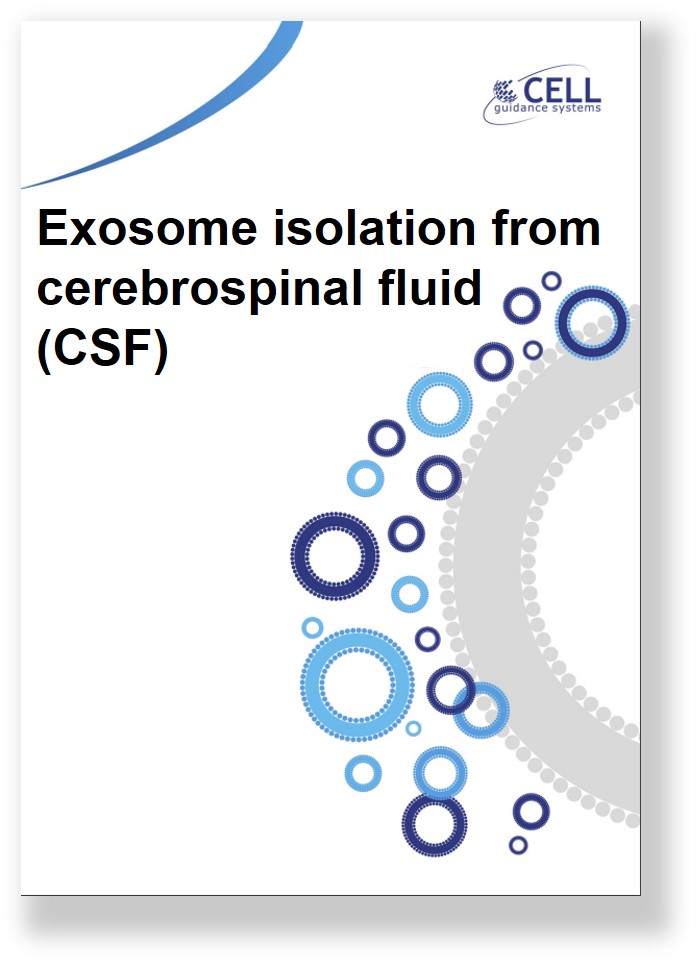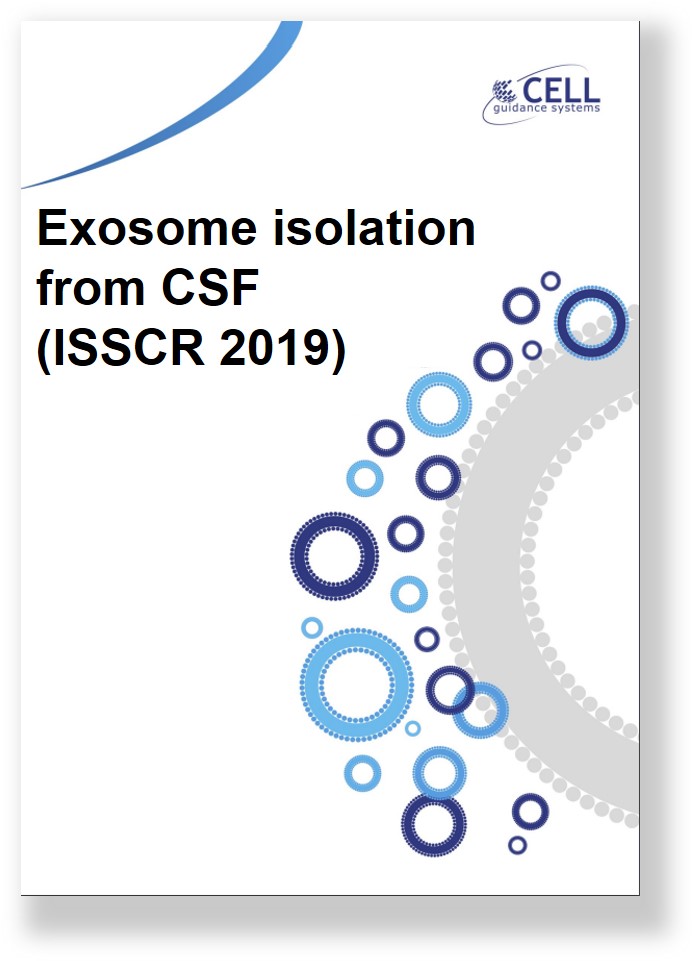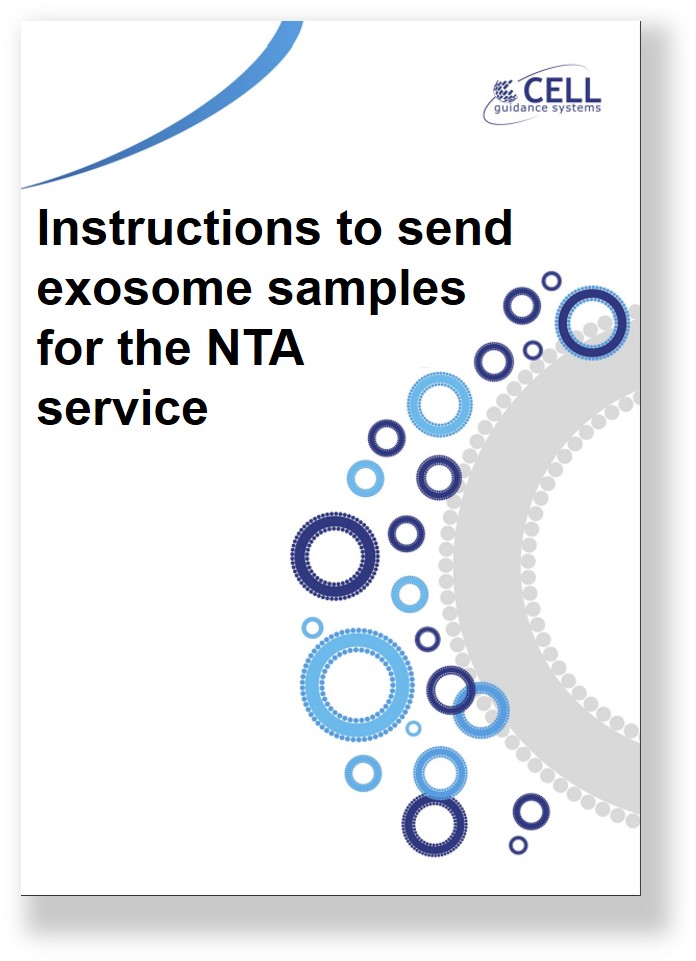Exosome Product Support Literature
Technical Notes
Conference Posters
Frequently Asked Questions
Videos
Using Exo-spin™ 96
Listen to leading exosome researchers describe the potential of exosomes
For technical support, please contact us by email at [email protected].
Abstracts
1. High-throughput exosome isolation
The Exo-spin™ range of columns offered by Cell Guidance Systems uses SEC to generate high quality purified extracellular vesicles (EVs), including exosomes, suitable for numerous research applications. The Exo-spin™ 96 is a high-throughput SEC column array, allowing up to 96 samples to be processed in parallel in less than 30 minutes.
2. Exosome Isolation from cerebrospinal fluid (CSF)
The Exo-spin™ exosome isolation system is here compared to two precipitation methods using 5 ml of CSF as the starting sample. The Exo-spin™ method was identified as superior, considering among other factors yield, purity, and the structural integrity of the generated samples. Nanoparticle tracking analysis (NTA), exosome protein to particle ratio, western blot and transmission electron microscopy (TEM) were used to generate comparative data.
3. Exosome size exclusion chromatography vs membrane affinity
The Exo-spin™ purification system has been identified as superior to the membrane affinity technique. This was described through two major benefits: 1) exosomes do not aggregate; and 2) exosomes are ready to use without further buffer exchange, even for functional downstream applications. Analyses such as particle number and vesicle size have been performed.
4. 96-well exosome detection assay
The ExoLISA™ exosome detection assay enables researchers to directly measure tetraspanins present on exosomes from sources such as cell culture media, urine, or blood with low background signals and high sensitivity. The assay has been successfully evaluated using BMG LABTECH plate readers. Accurate and reliable TRF signals were obtained for different exosome markers, with all instruments meeting the sensitivity requirements, ensuring optimal assay performance.
5. Exosome isolation from cerebrospinal fluid
Exosome isolation from cerebrospinal fluid (CSF) is commonly investigated to discover potential protein candidates for diagnostics in Central Nervous System (CNS) diseases. However, the isolation step is still challenging and an efficient method for isolating exosomes from small volumes of CSF needs to be identified. In this poster, we highlight the Exo-spin™ Exosome isolation kit as a novel tool to help exosome isolation in neurodegenerative disease research.
6. Isolation of exosomes from different body fluids
Exo-spin™ exosome isolation system was compared to two other precipitation methods using serum, plasma and CSF as starting samples
Exosome Poster Abstracts
1. Exo-spin™ mini-HD columns for isolating high-quality exosomes (FSEV 2019)
Exosome research plays an increasingly important role in therapeutics and diagnostics. Therefore, efficient and reliable methods for isolating exosomes are required. Among other methods, size exclusion chromatography (SEC) is widely used for exosome isolation from all biofluids, as it demonstrates highly pure and concentrated samples. Moreover, SEC can be performed under different protocols, including centrifugation and gravity flow. Under gravity, one sample can be collected into fractions and analysed for a complete high-resolution fractionation profile. In this poster, we highlight the Exo spin™ mini HD kit as a novel tool to isolate exosomes from human serum as an example.
2. A validated technique for exosome isolation from cerebrospinal fluid (ISSCR 2019)
Exosome isolation from cerebrospinal fluid (CSF) is commonly investigated to discover potential protein candidates for diagnostics in central nervous system (CNS) diseases. However, the isolation step is still challenging and an efficient method for isolating exosomes from small volumes of CSF needs to be identified. In this poster, we highlight the Exo-spin™ exosome isolation kit as a novel tool to help exosome isolation in neurodegenerative disease research.
3. Flexible system for isolation of exosomes from small volumes of biofluids (UKEV 2018)
Exosomes can pass the blood-brain barrier due to their nanoscale size. This property makes exosome research attractive for areas such as biomarker discovery for neurodegenerative diseases and also drug delivery. To study these fields, efficient methods for isolating exosomes from small volumes of biofluids such as serum, plasma and CSF need to be identified. Exo-spin™ exosome isolation system was compared to two other precipitation methods using serum, plasma and CSF as starting samples. Exo-spin™ method has been identified as superior. Among other factors, yield, purity as well as structural integrity of the generated samples have been analysed as part of this comparison. Analyses such as NTA, exosome protein to particle ratio, WB and TEM were used to generate comparative data. (TS Martins et al., 2018)










